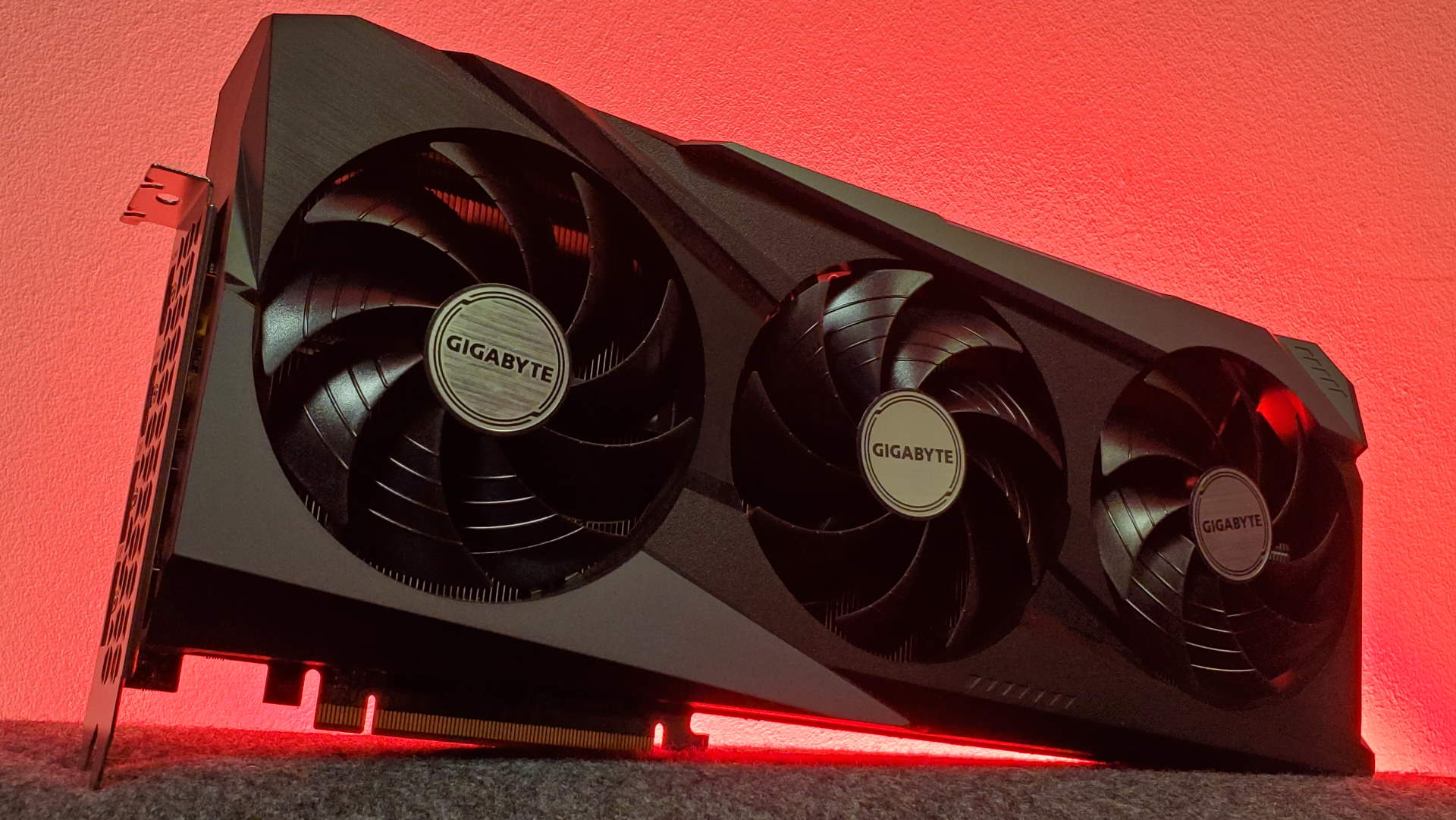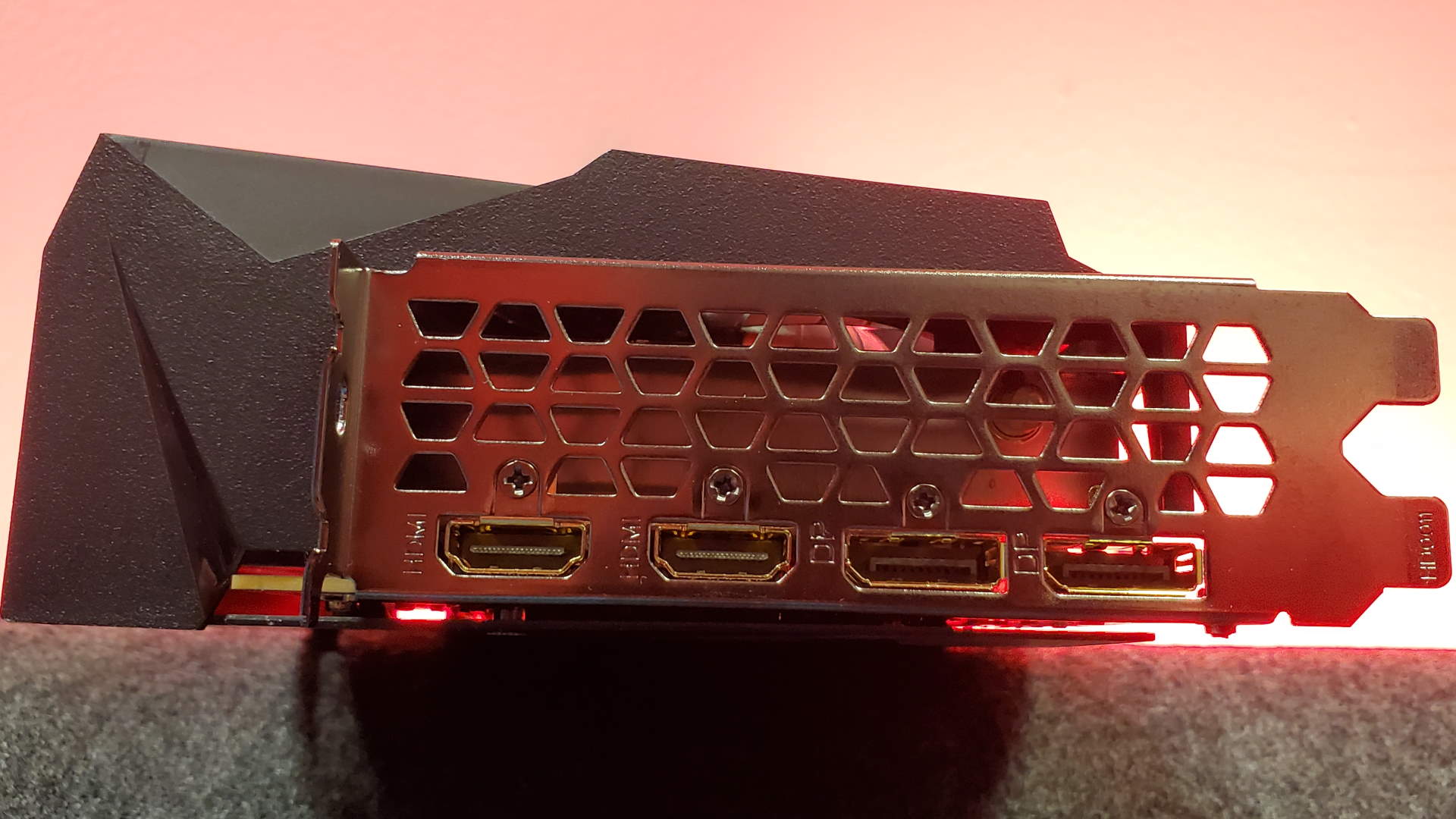Our Verdict
Gigabyte's RX 6950 XT is an excellent version of AMD's latest top-end GPU. It's cool-running, quiet, and impressively powerful. Though far more thirsty than RDNA 2 cards before it. The real issues, however, are all external, and stem from the expectation that AMD and Nvidia's next-gen GPUs are but a handful of months away now.
For
- RTX 3090 gaming performance
- Cool and quiet
Against
- Power hungry
- Lotta cash
- Next-gen is looming large
PC Gamer's got your back
AMD made a big thing this generation about being the performance per watt champions for PC gamers. And indeed is making those same claims going forward into its RDNA 3 era. But the last hurrah for RDNA 2—with this RX 6950 XT as its final flagship—flies in the face of all that efficiency bravado. But it certainly delivers where PC gamers need it to.
We've got our hands on Gigabyte's version of AMD's RX 6950 XT. It's the top of the Radeon stack, offering the very best of the Navi 21 silicon, for the most money of any single-GPU card from the red team ever asked.
Unlike the relatively recent Nvidia GeForce RTX 3090 Ti, which unlocks the full might of the GA102 GPU to offer more of (almost) everything compared with the GeForce RTX 3090, the actual core makeup of the RX 6950 XT is identical to the original Radeon RX 6900 XT. This is less a new full-fat spin of AMD's top chip, and more a bin-sorted version that clocks significantly higher than its forebear.
Where our reference-clocked RX 6900 XT averaged a not-too-shabby 2,212MHz during extended testing, this Gigabyte version of the RX 6950 XT manages to hit an average 2,553MHz. Not that long ago 2.5GHz would have been a reasonable clock speed for a processor, and isn't something we'd seen in graphics cards until this RDNA 2 generation dropped.
Admittedly, we've had the Radeon RX 6600 XT up over the 2.7GHz mark, but that's a far less complex GPU than the Navi 21 GPU, which is also more than double the size. Keeping something like this RX 6950 XT running at this consistent speed is far more impressive a feat.
Inevitably you need a little more juice to be able to sustain those frequency levels; these cards sport mature versions of the Navi 21 silicon that are able to swallow down over 400W of board power and remain stable in-game. To that end, the RX 6950 XT is rated to 335W typical board power (TBP), while the RX 6900 XT was a more restrained 300W.
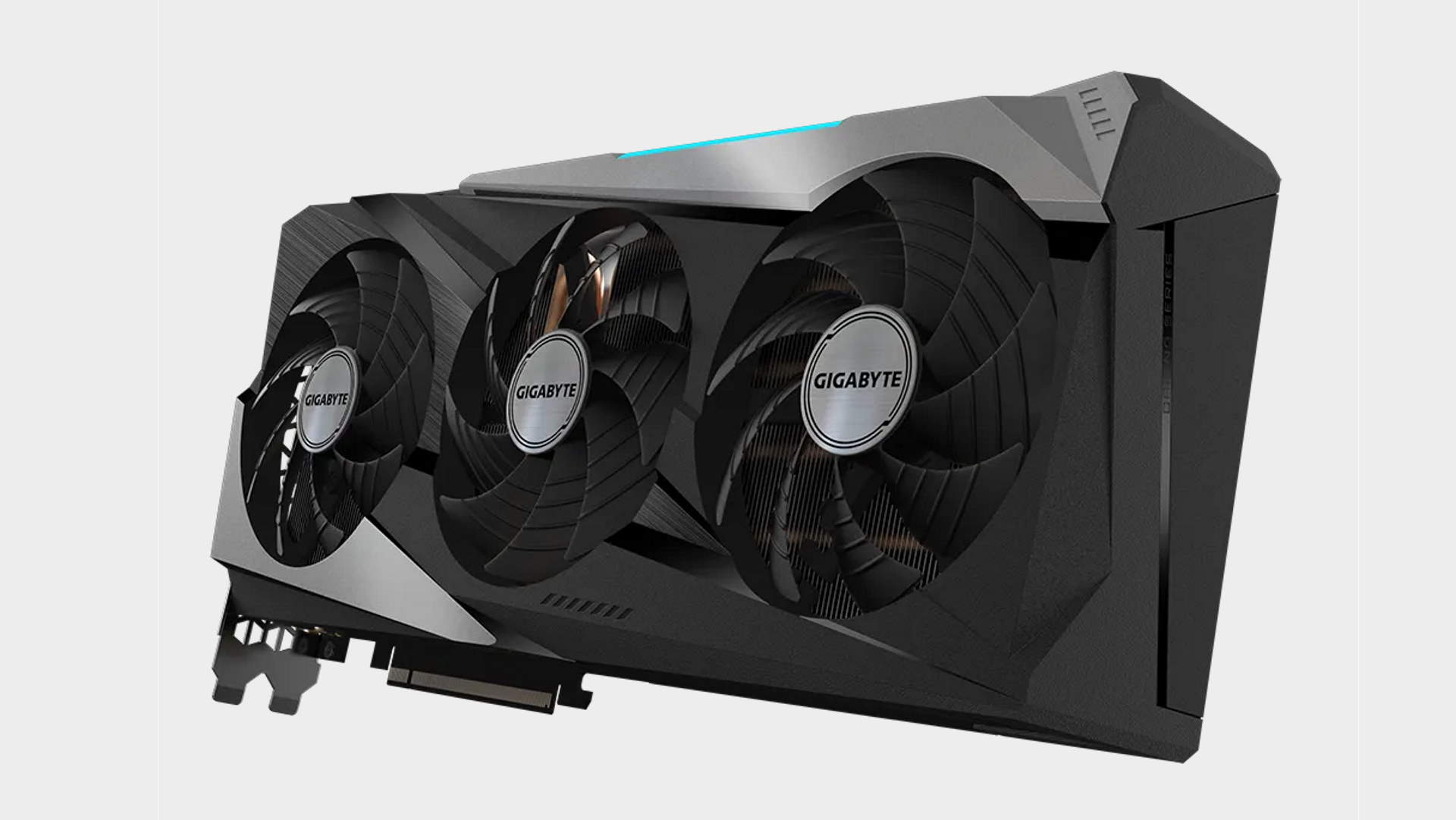
If you're dropping over a grand on a GPU you better not be strapping it to a 1080p TN panel, you heathen.
In real terms that actually translates to the same power levels as the RTX 3090, and also results in more or less the same performance levels in many games, too.
Considering this is a $1,099 GPU—and is actually still available to buy at that price—compared to a GeForce card that's still retailing for $1,600 at best, that's actually pretty impressive. It's only another $100 more expensive than the standard RX 6900 XT, and does manage to deliver the higher performance because of the increased power/frequency thing.
It's most significant at the high end of the resolution spectrum, which is just as well, because if you're dropping over a grand on a GPU you better not be strapping it to a 1080p TN panel, you heathen. But there are gains down there, too, for the triple-figure frame rate hunters.
1440p gaming performance
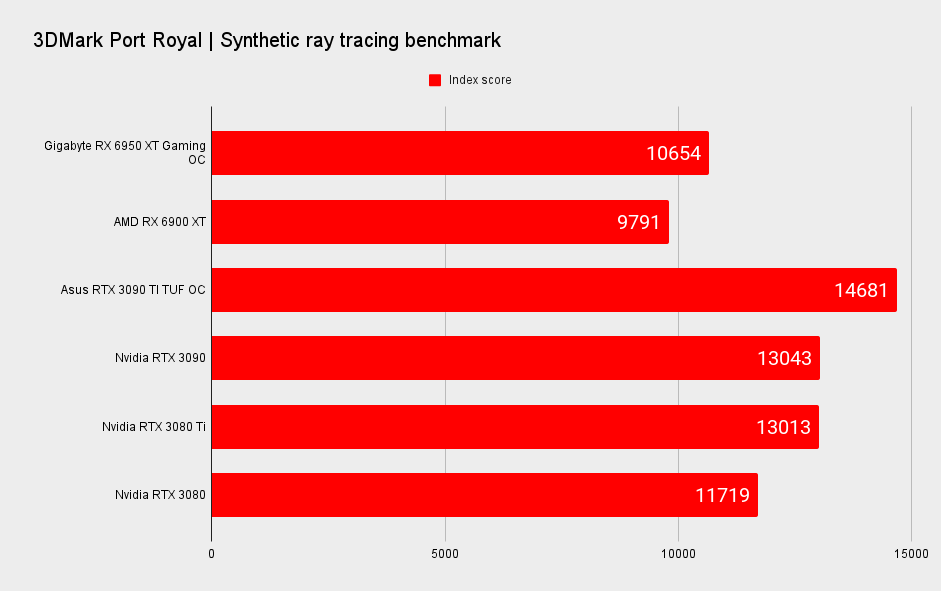
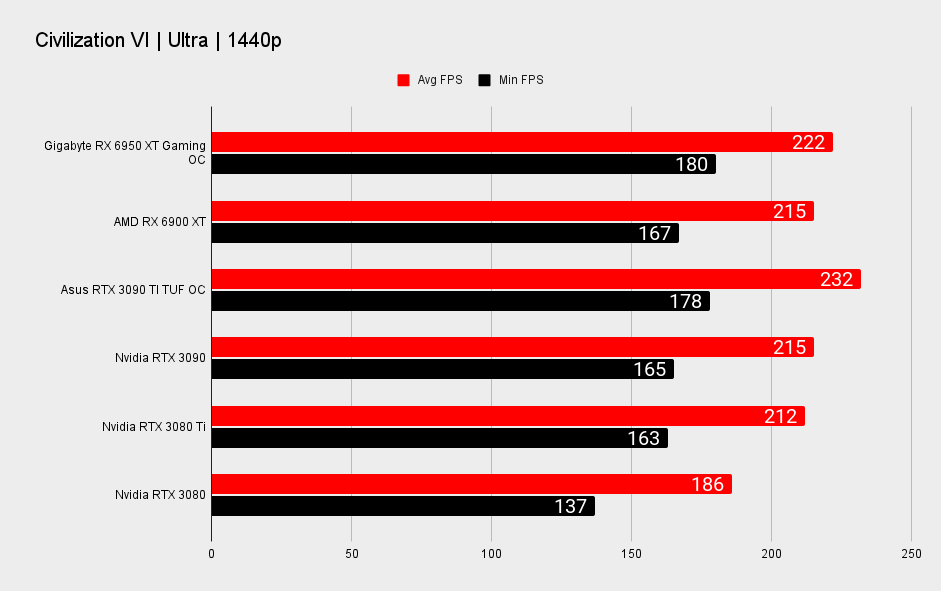
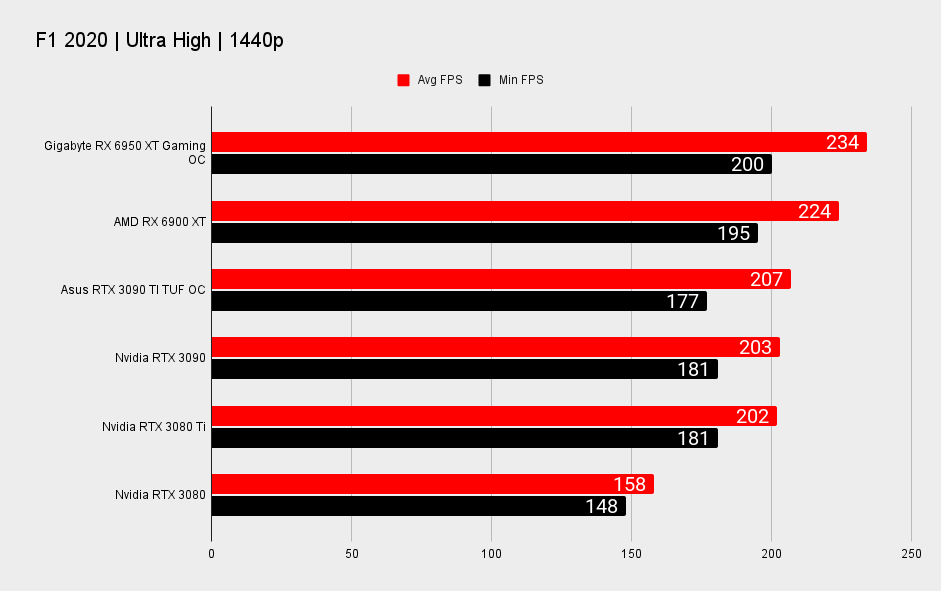
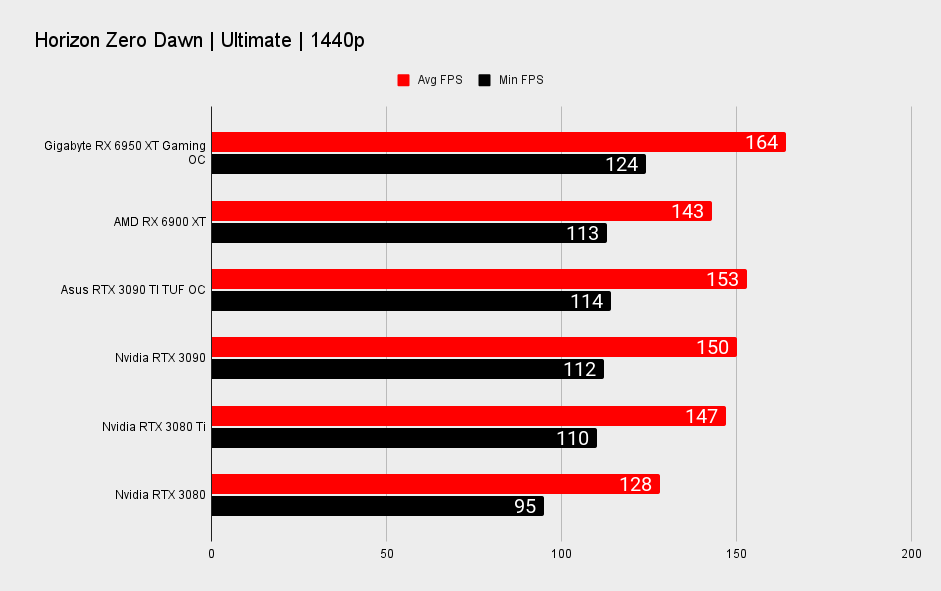
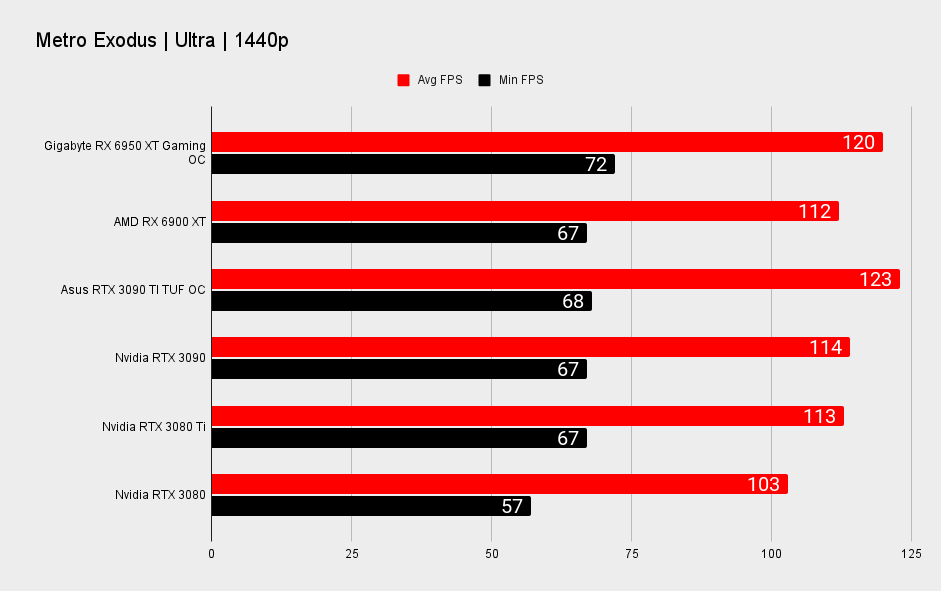
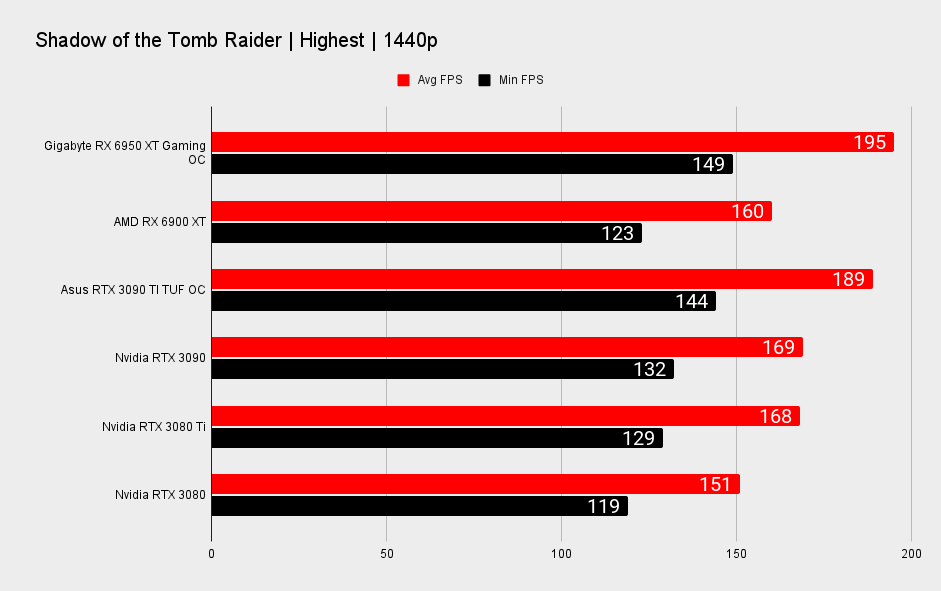
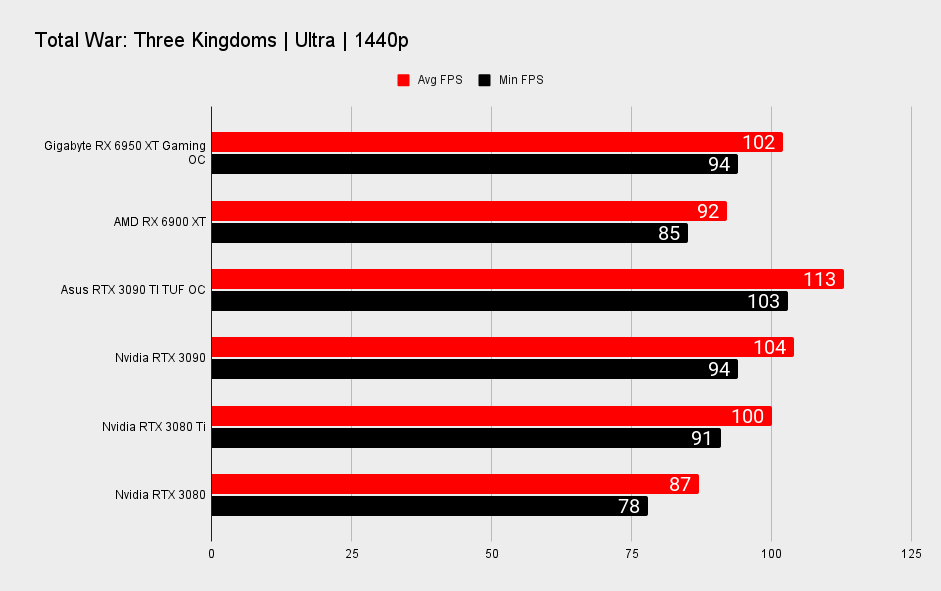
4K gaming performance
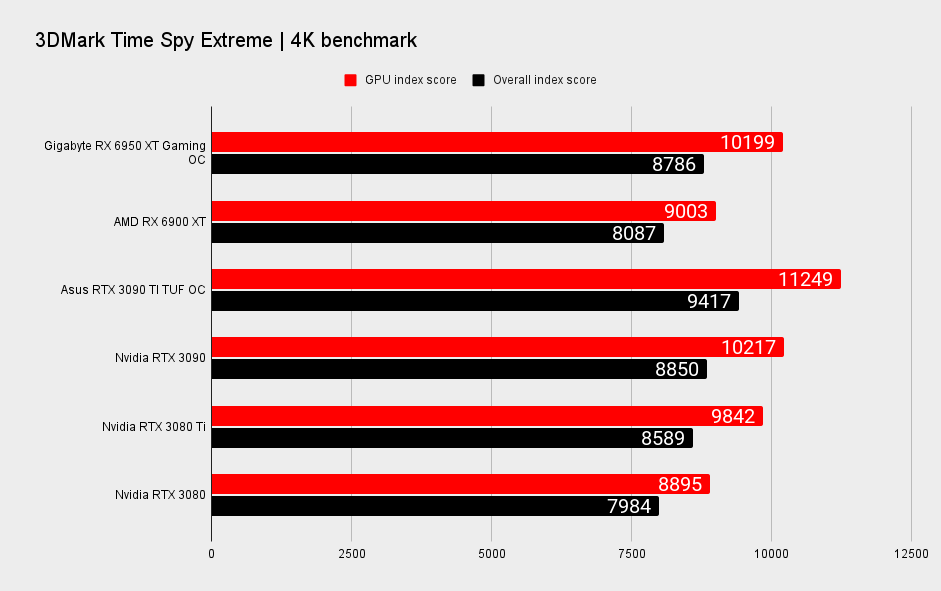
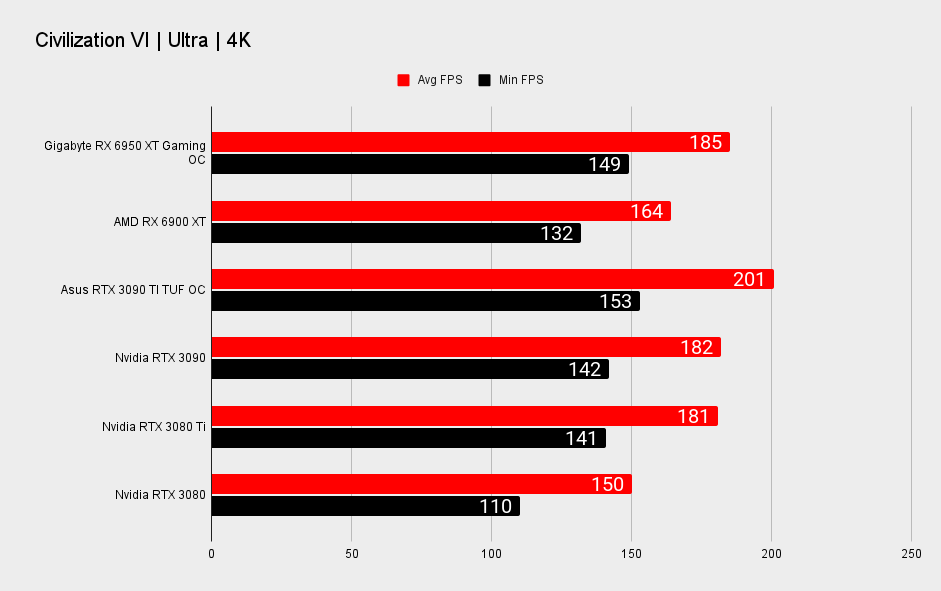
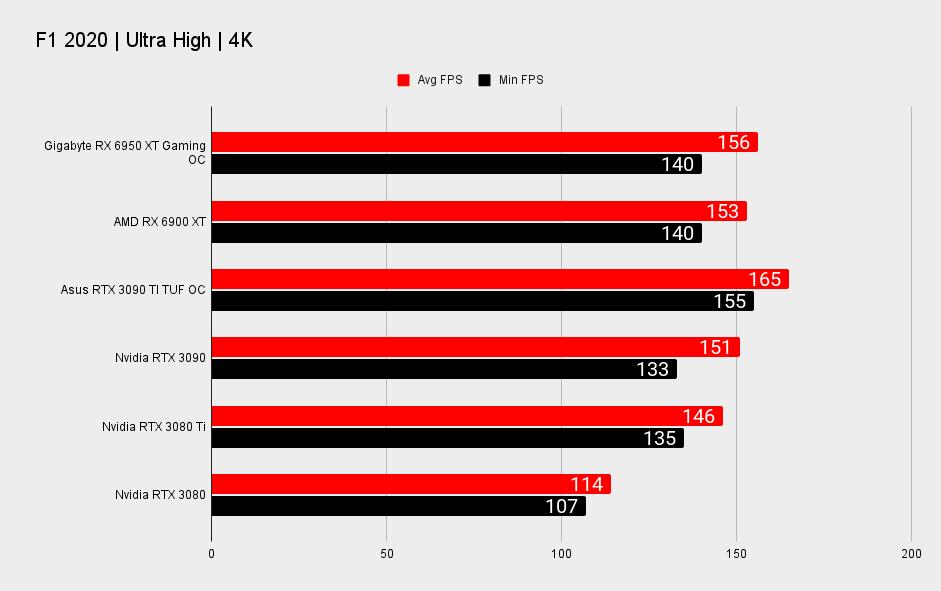
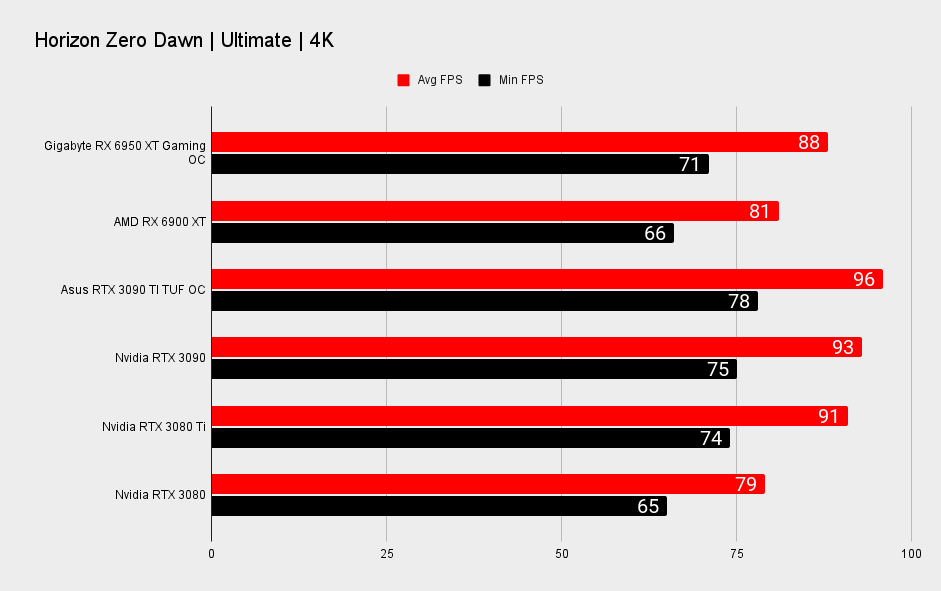
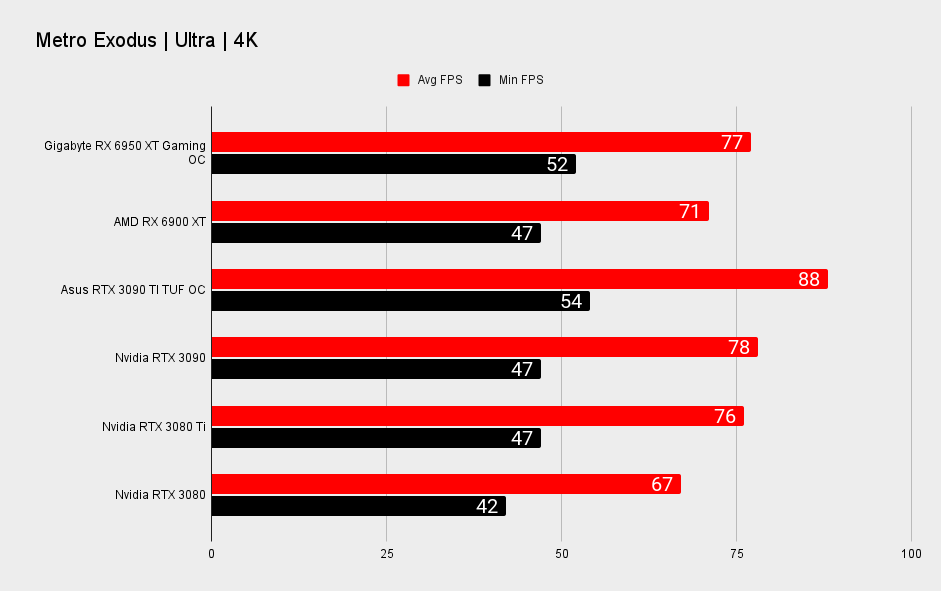
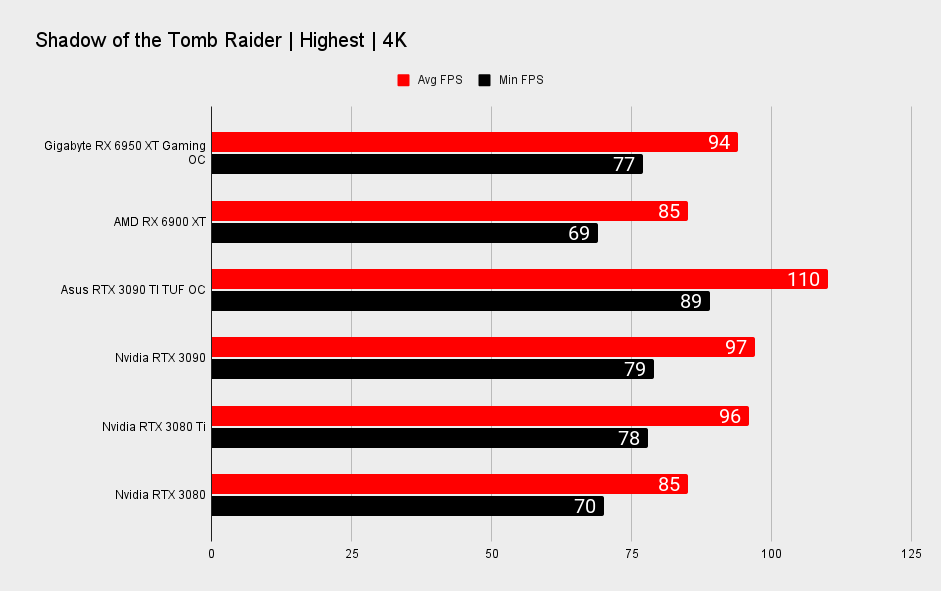
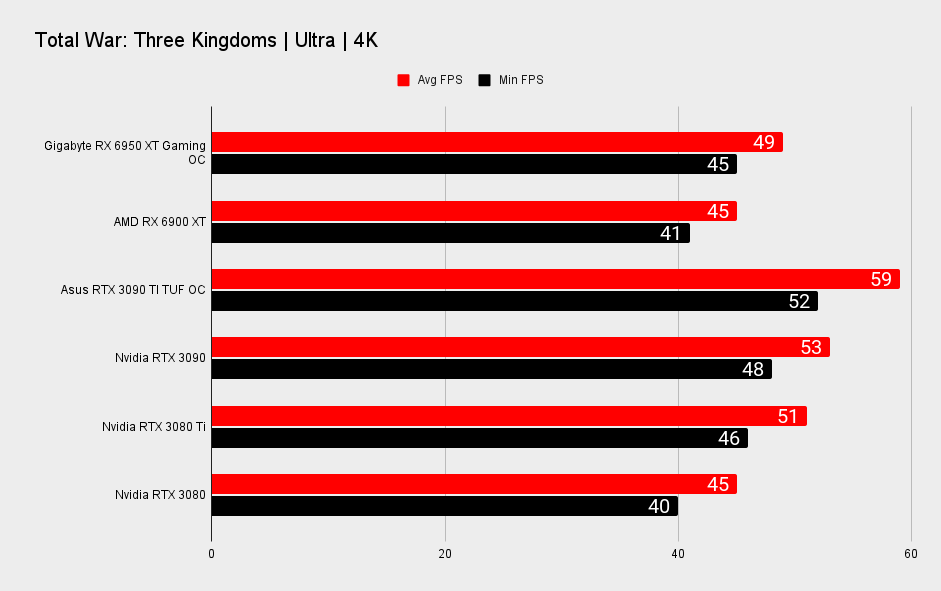
GPU performance
And it's this frame rate performance which is going to be of the greatest import to PC gamers, though it would be remiss of me not to mention the relative power draw necessary to get the RX 6950 XT performing so far above the RX 6900 XT. On average, our RX 6900 XT was knocking around the 300W mark, sticking to its suggested 335W TBP, while this RX 6950 XT is just shy of 360W—with a peak of 408W.
As we said, the performance-per-watt numbers for AMD's RDNA 2 cards have been something the red team has been holding up as something to celebrate, and rightly so. They've been very efficient, though in our testing not hugely more so than the Nvidia cards. They may be thirsty, but the GeForce cards do fly, too.
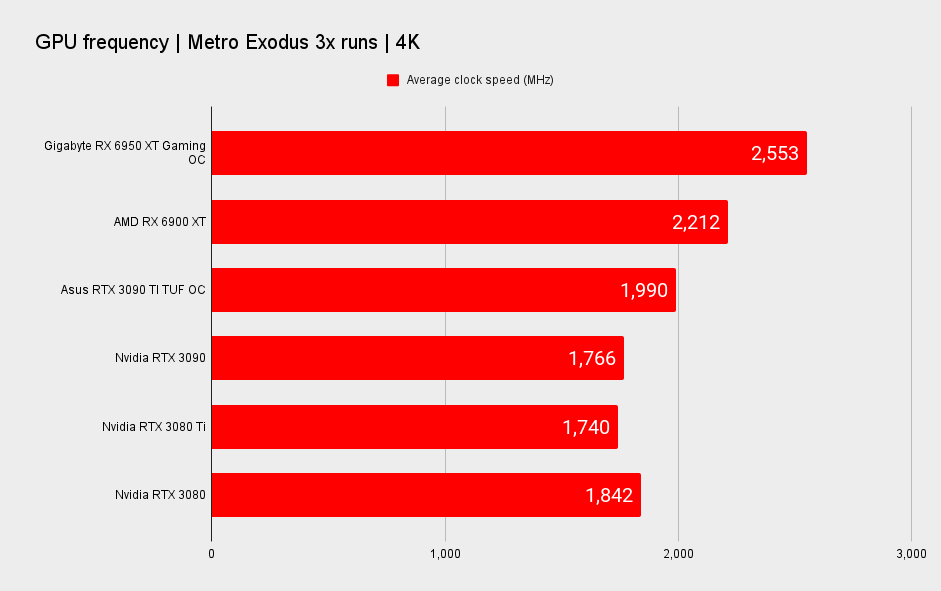
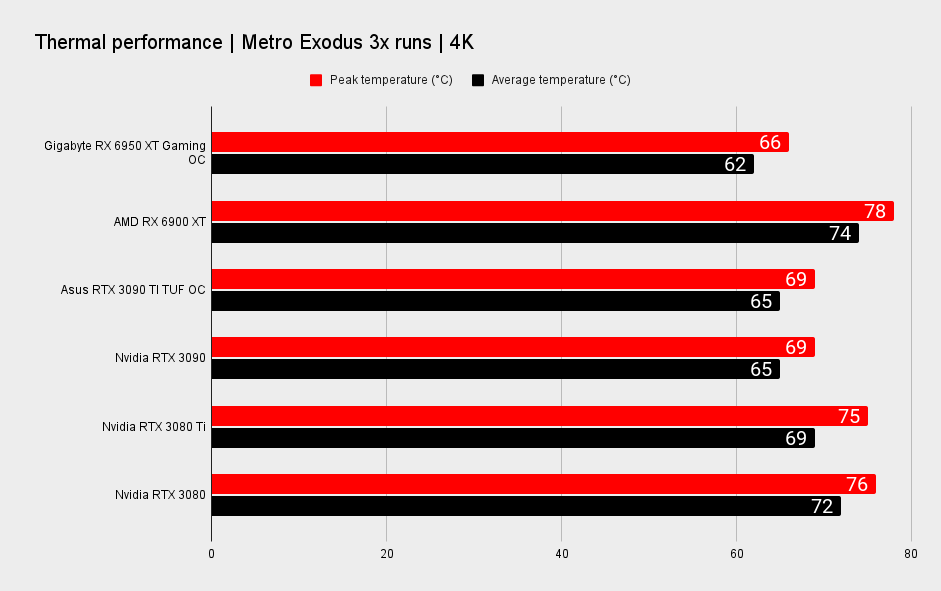
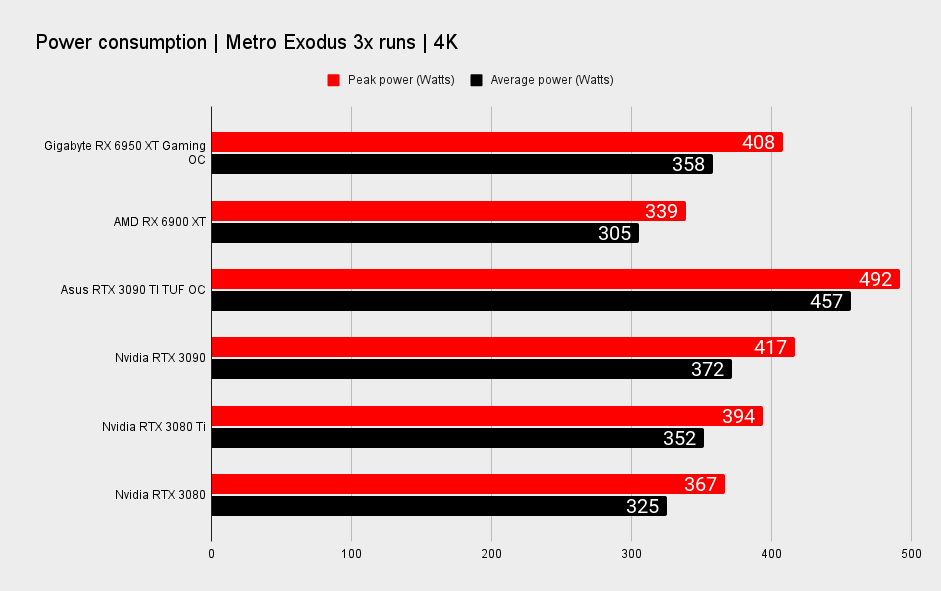
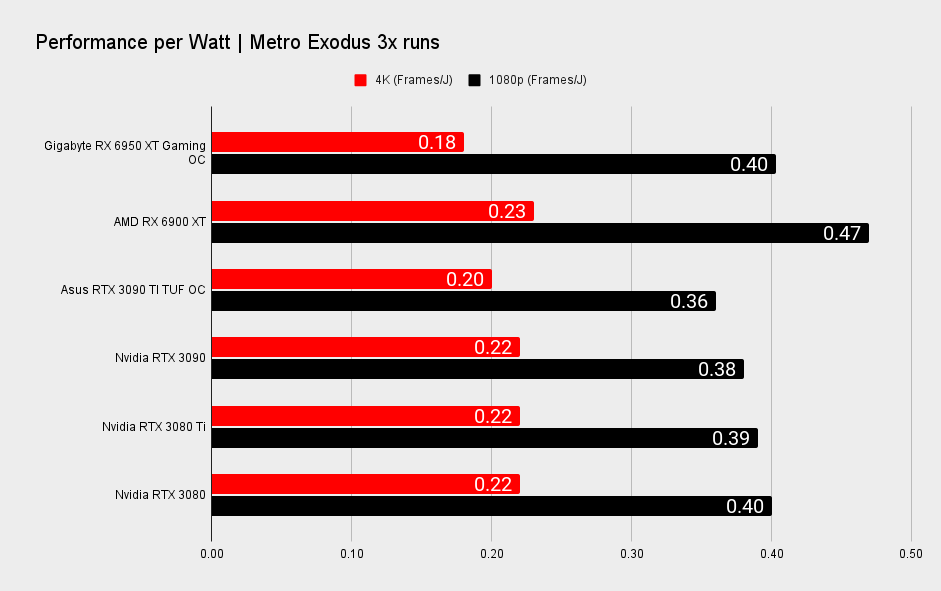
CPU - Intel Core i7 10700K
Motherboard - MSI MPG Z490 Gaming Carbon WiFi
RAM - Corsair Vengeance RGB Pro @ 3,200MHz
CPU cooler - Corsair H100i RGB Pro XT
PSU - NZXT 850W
Chassis - DimasTech Mini V2
Monitor - Eve Spectrum
That's out of the window now, with the RX 6950 XT and RX 6750 XT cards, however. But if they can maintain their high frame rates, most PC gamers aren't going to worry about a little thing like massively spiking energy prices.
But yes, let us celebrate that AMD has caught up with Nvidia's erstwhile top gaming card, the RTX 3090, because that's a significant step. The RX 6950 XT can deliver gaming performance the red team's fans could only fantasise about in the over-hyped echo chamber fever dreams of Reddit just a generation ago.
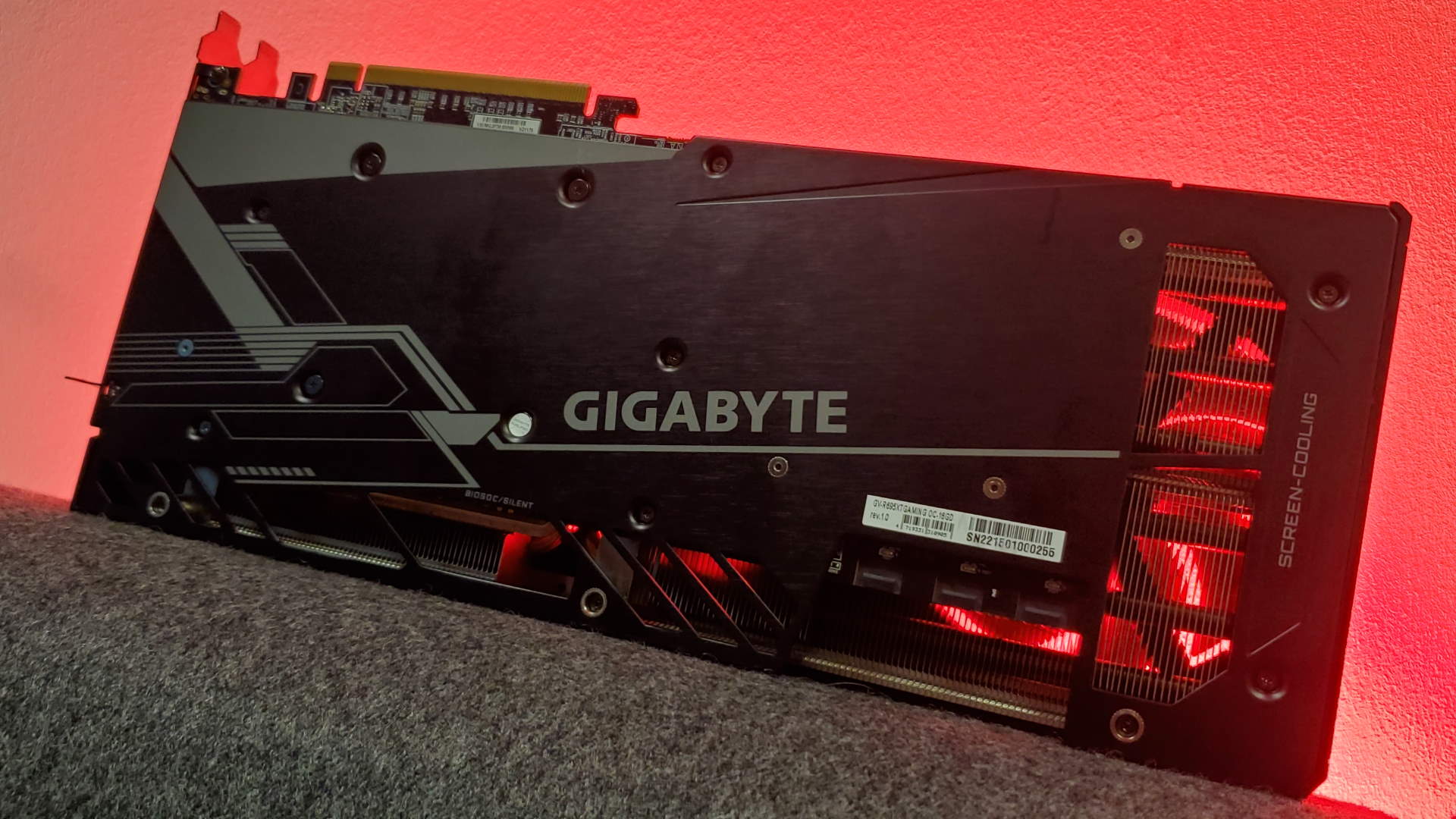

We're at a ludicrous point to be purchasing a new high-end graphics card.
And let's forget the fact Nvidia has released the RTX 3090 Ti, which is even faster, more power-hungry, and offensively priced at $2,000. And I'm not being facetious here, either. We should forget it. Though, honestly, I'd probably forget about this RX 6950 XT, too. We're at a ludicrous point to be purchasing a new high-end graphics card, and if you're dropping a grand or more on a GPU at this point then you better be prepared for some serious buyer's remorse the instant either AMD or Nvidia announce their next-gen plans.
It is, of course, never a good time to upgrade in PC land when you're concerned about the relentless pace of technical innovation and advancement. Our general advice is, if you need a new piece of hardware right now, buy it. But that has to change when you get within six months of the birth of a significant new generation.
And that's where we are right now. Before the end of the year we'll have new cards from both Nvidia and AMD, and all the rumours suggest that we're looking at another big gen-on-gen performance leap. On the AMD side alone, the first card expected to drop—the RX 7700 XT—is said to have RX 6900 XT levels of gaming performance.
That's surely going to be a $500-$600 graphics card, which would make spending twice as much on anything high-end today a fool's errand.
This Gigabyte RX 6950 XT is a well-made card, however. The operating temperatures are impressively low, it runs at an impressively high speed and yet remains quiet while doing so, and is far more affordable than the performance equivalent of Nvidia. But would I buy one? Hell, no. Buying anything more than a sub-MSRP RTX 3060 Ti or RX 6700 XT today is just setting yourself up for disappointment.
Gigabyte's RX 6950 XT is an excellent version of AMD's latest top-end GPU. It's cool-running, quiet, and impressively powerful. Though far more thirsty than RDNA 2 cards before it. The real issues, however, are all external, and stem from the expectation that AMD and Nvidia's next-gen GPUs are but a handful of months away now.

Dave has been gaming since the days of Zaxxon and Lady Bug on the Colecovision, and code books for the Commodore Vic 20 (Death Race 2000!). He built his first gaming PC at the tender age of 16, and finally finished bug-fixing the Cyrix-based system around a year later. When he dropped it out of the window. He first started writing for Official PlayStation Magazine and Xbox World many decades ago, then moved onto PC Format full-time, then PC Gamer, TechRadar, and T3 among others. Now he's back, writing about the nightmarish graphics card market, CPUs with more cores than sense, gaming laptops hotter than the sun, and SSDs more capacious than a Cybertruck.
